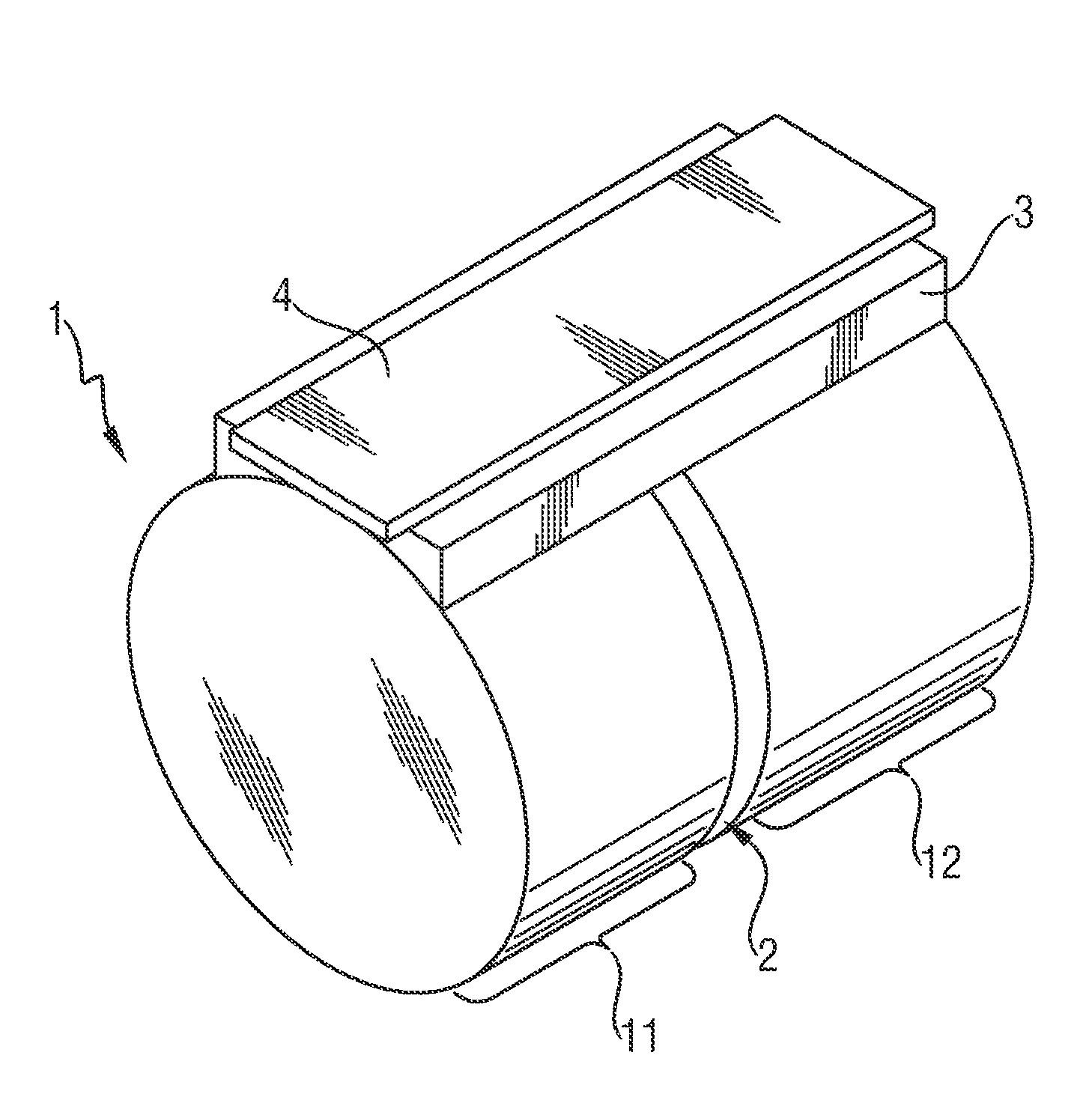Method for simultaneously cutting a compound rod of semiconductor material into a multiplicity of wafers
a technology of compound rods and semiconductor materials, which is applied in the direction of manufacturing tools, chemistry apparatus and processes, transportation and packaging, etc., can solve the problems of insufficient use of inability to optimally use gang lengths of wire saws, and limited gang lengths. , to achieve the effect of improving the warp of the wafers
- Summary
- Abstract
- Description
- Claims
- Application Information
AI Technical Summary
Benefits of technology
Problems solved by technology
Method used
Image
Examples
Embodiment Construction
[0057]The workpieces 11 and 12 are assembled with a two-component adhesive to form a compound rod 1. The fabrication accuracy of the end surfaces, on which the two workpieces are adhesively bonded together, allows the adhesive joint 2 to be selected as small as possible. The workpieces 11 and 12 assembled to form a compound rod 1 are cemented onto a sawing strip 3. The compound rod 1 comprising the two workpieces 11 and 12 and with the sawing strip 3 is fixed on a mounting plate 4 and clamped in a wire saw.
[0058]Table 1 shows various comparative values of geometrical parameters for assembled rod pieces according to the prior art (column 2) and for compound rods according to the invention (column 3).
[0059]Three values of three different quantile values are given for each parameter: thus, Wav_max 97.7%=6.29 μm / mm means that 97.7% of the wafers have a Wav_max of 56.29 μm / mm or less, etc.
[0060]A significant improvement over the prior art is found for virtually all studied parameters and...
PUM
| Property | Measurement | Unit |
|---|---|---|
| total length | aaaaa | aaaaa |
| lengths | aaaaa | aaaaa |
| lengths | aaaaa | aaaaa |
Abstract
Description
Claims
Application Information
 Login to View More
Login to View More - R&D
- Intellectual Property
- Life Sciences
- Materials
- Tech Scout
- Unparalleled Data Quality
- Higher Quality Content
- 60% Fewer Hallucinations
Browse by: Latest US Patents, China's latest patents, Technical Efficacy Thesaurus, Application Domain, Technology Topic, Popular Technical Reports.
© 2025 PatSnap. All rights reserved.Legal|Privacy policy|Modern Slavery Act Transparency Statement|Sitemap|About US| Contact US: help@patsnap.com



